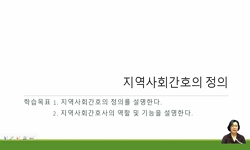Various housing measures are needed for the rapidly aging society of Korea. In particular, the welfare policy for the elderly has changed towards the community care. Taking this fact into consideration, it is necessary to have the establishment of a s...
http://chineseinput.net/에서 pinyin(병음)방식으로 중국어를 변환할 수 있습니다.
변환된 중국어를 복사하여 사용하시면 됩니다.
- 中文 을 입력하시려면 zhongwen을 입력하시고 space를누르시면됩니다.
- 北京 을 입력하시려면 beijing을 입력하시고 space를 누르시면 됩니다.

A Study on the Establishment & Functional Characteristics of Health Facilities for the Aged in Japan
한글로보기https://www.riss.kr/link?id=A106321617
- 저자
- 발행기관
- 학술지명
- 권호사항
-
발행연도
2006
-
작성언어
English
- 주제어
-
등재정보
KCI등재
-
자료형태
학술저널
-
수록면
1-7(7쪽)
- 제공처
- 소장기관
-
0
상세조회 -
0
다운로드
부가정보
다국어 초록 (Multilingual Abstract)
Various housing measures are needed for the rapidly aging society of Korea. In particular, the welfare policy for the elderly has changed towards the community care. Taking this fact into consideration, it is necessary to have the establishment of a system that offers the elderly appropriate welfare services at their appropriate residence (ageing in place) for the effectiveness of the community care. In this aspect, there are a number of implications to Korea to study merits and demerits of the Health Facilities for the Aged (HFA) in Japan. The society of Japan has been rapidly aging since 1970, and Korea is to face the same situation. As for the data of this study, a total of 2,393 facilities (as of November 1999) mentioned in the annual report of the Japanese Ministry of Health, Labor and Welfare were classified based on types of their establishment: (1) free-standing structures (603 facilities); (2) annexes to hospitals (981 facilities); (3) annexes to welfare facilities (511 facilities); and (4) annexes to clinics (298 facilities). Next, 239 facilities were selected through taking a sample of 10 percent from each type of the HFA mentioned above. This was done through the random sampling method with the computer program of MS EXCEL. The Implications of the results of analyses are as follows. First, most of the health facilities were planned with the scale that was larger than the scale of standard special nursing homes in terms of the total floor area. Precise equations that were to obtain precise results of the scale of the HFA and the appropriate number of residents were obtained through the method of the regression analysis. Korea and Japan have similarities in terms of culture, society and family relations; however, the two countries also have differences in terms of the application of laws on the establishment of houses, hospitals, and welfare facilities. As for planning the scale of the HFA, the realities of Korea should be considered. Second, as for the functional aspect of the HFA with a condition of returning home, the place before and after the HFA showed the pattern of 'from a residential place to a residential place' and 'from a hospital to a hospital.' This reveals a close correlation with the types of the HFAs and operational ways of the facilities. Its cause is considered to be the aspect of the operation and management of the HFA rather than the aspect of its function of providing services in association with medical and health facilities. Therefore, when intermediate welfare facilities are considered in Korea, it is strongly advised to consider the problem of annexes to other facilities and efficiency of sharing of the facilities in terms of its operation and management.
동일학술지(권/호) 다른 논문
-
A Study on the Establishment & Functional Characteristics of Health Facilities for the Aged in Japan
- 대한건축학회
- Tae Il Kim
- 2006
- KCI등재
-
Analysis of Preferable Café Interior Design Using Human Sensibility Ergonomics
- 대한건축학회
- Hyung Soo Seo
- 2006
- KCI등재
-
The Prevalence of Brownfields Redevelopment
- 대한건축학회
- Jea Sun Lee
- 2006
- KCI등재
-
Symbiotic Framework for Campus Core and Modern Expansion
- 대한건축학회
- Gwang Ya Han
- 2006
- KCI등재




 ScienceON
ScienceON




